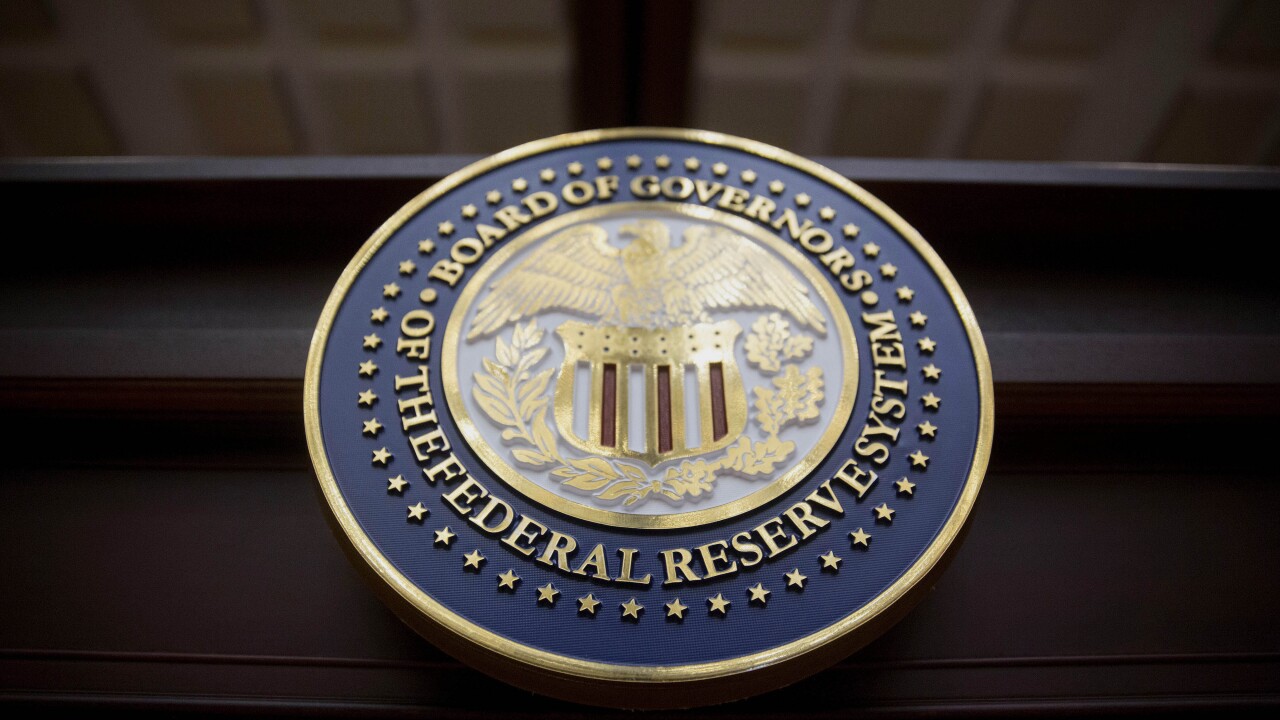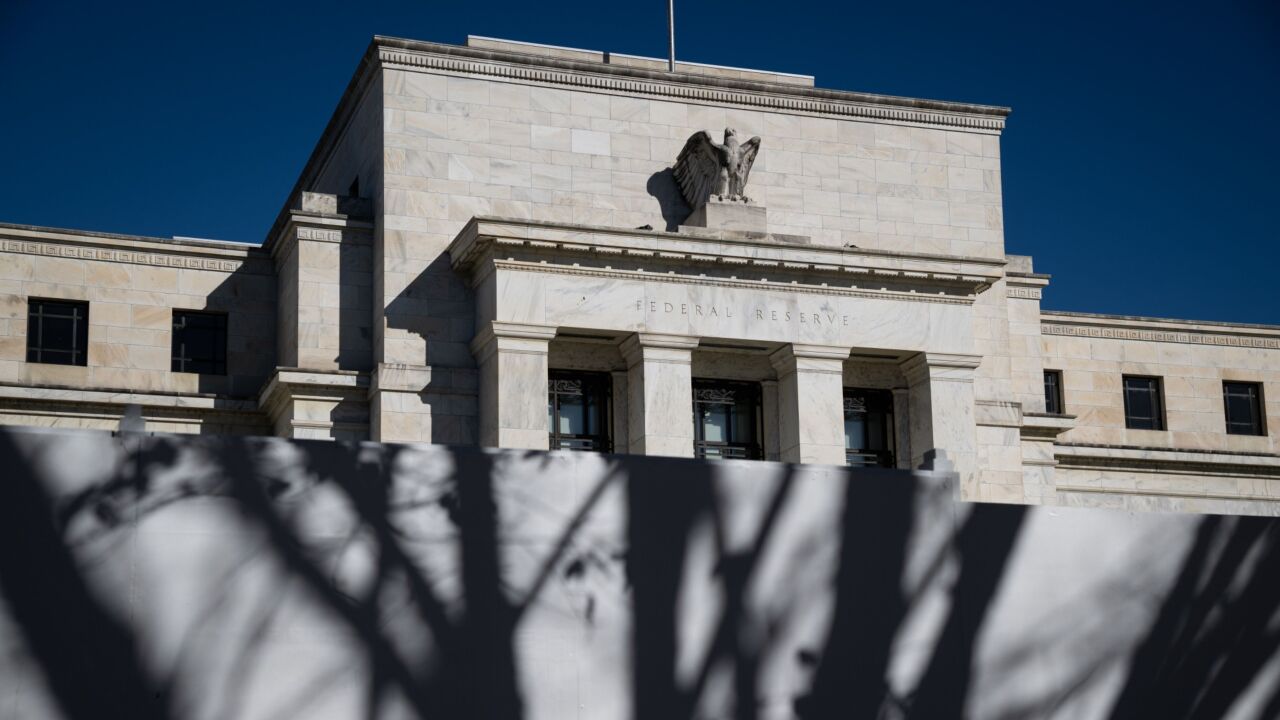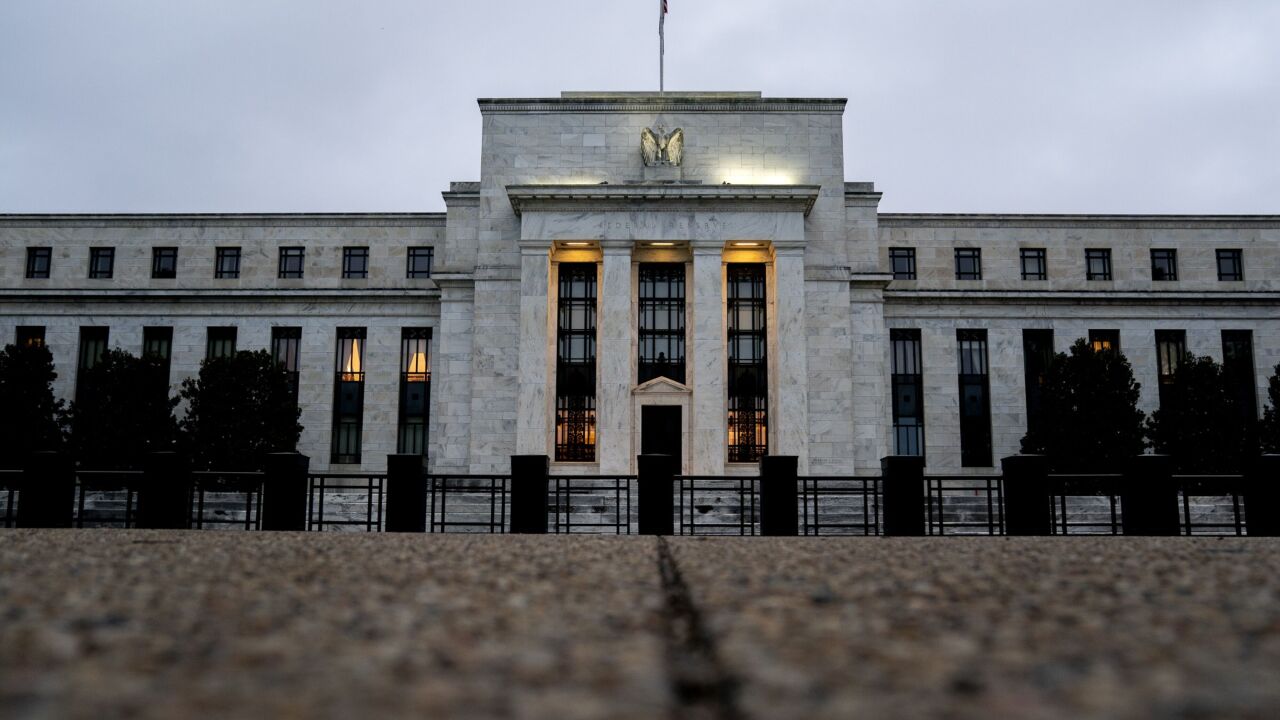-
The Federal Reserve Friday issued a set of proposed changes to its stress testing program for the largest banks that would disclose the central bank's back-end stress testing models, a move that the Fed had long opposed out of fear of making the tests easier for banks to pass.
October 24 -
Federal Reserve Vice Chair for Supervision Michelle Bowman said in a speech Tuesday that the central bank would unveil proposed revisions to its stress testing regime "in the next week or so."
October 14 -
In a unanimous vote, the Board of Governors moved to lower Morgan Stanley's stress capital buffer requirement to 4.3%, down from a preliminary 5.1% based on this year's stress test results.
September 30 -
Federal Reserve Governor Michael Barr warned that subjecting the stress testing models to the notice and comment process could lead them to "ossify."
September 25 -
After passing the Federal Reserve's stress tests with high marks, large banks announced dividend increases. In some cases, they also said the Fed had conceded that certain prior calculations needed to be revised.
July 2 -
Starting at 4:30 p.m., the 22 large banks that were stress-tested by the Fed can release information about their plans for dividend increases and share repurchases.
July 1 -
While banks will likely increase near-term dividend plans, analysts and investors are more focused on the long-term outlook for capital requirements from regulators.
June 30 -
The largest U.S. banks took less of a capital hit under the Federal Reserve's hypothetical stress scenario than they did last year, but averaging the two sets of results could impact next year's regulatory requirements.
June 27 -
Analysts are predicting stronger results this year after a disappointing outcome in 2024.
June 23 -
Despite its commitment to change its stress testing program, the Federal Reserve is defending its current practices in court. That argument raises thorny legal questions about whether stress tests are more like rules or adjudications.
May 6 -
The Federal Reserve proposed a rule to average individual banks' stress test results over two years, a measure the central bank says would reduce volatility in bank capital requirements from year to year.
April 18 -
The banking industry groups suing the Federal Reserve over its stress testing practices filed a motion for a summary judgment in the case, arguing that a quick resolution could ensure changes are made prior to the 2026 stress testing cycle.
March 25 -
With the Federal Reserve eyeing changes to its annual examination of large bank resilience, this year's test could be the last of its kind.
February 5 -
The Bank Policy Institute, the American Bankers Association and others said proposed changes would address "some if not all" of banks' concerns about stress tests, but they are filing the lawsuit to preserve their legal right to do so.
December 24 -
Large and regional banks again proved their resiliency in the Fed's annual exams. But analysts noted that a few lenders faced some negative surprises — a development that may scuttle investor hopes for share buybacks by those banks.
June 27 -
The Federal Reserve attributes the uptick in simulated losses in this year's stress test examination to heightened risks on bank balance sheets and higher expense levels. Credit cards and corporate lending were top areas of concern for the central bank.
June 26 -
A recent white paper from former Federal Reserve Gov. Daniel Tarullo suggests that the stress testing regime should be decoupled from bank capital requirements. But if stress testing isn't an effective means of assigning minimum regulatory capital levels, what is?
June 4 American Banker
American Banker -
The Federal Reserve Board's 2024 stress test scenario posits severe market volatility, widening corporate bond spreads and significant declines in asset prices. The scenario comes alongside new exploratory analyses probing additional risks for the first time.
February 15 -
The Federal Reserve vice chair for supervision says the failure of Silicon Valley Bank showed the shortcomings of the current stress testing regime.
October 19 -
On a combined basis, the GSEs performed better under this year's scenario than they did in 2021, but the Federal Housing Finance Agency said changes were still needed.
August 11













